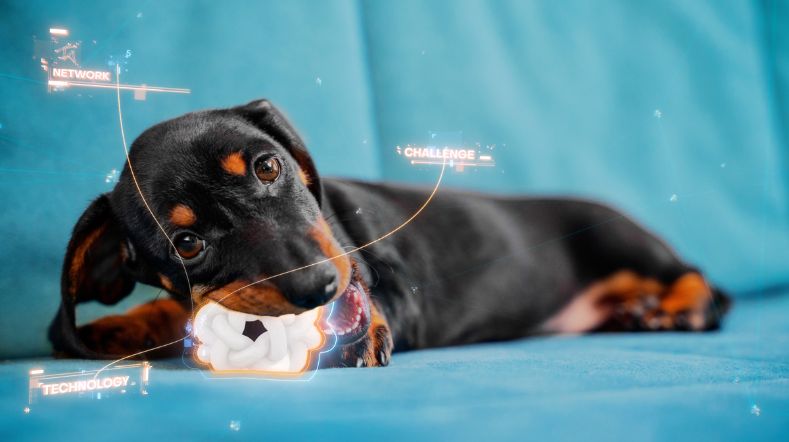
TNO innovations
TNO has been bringing research and innovations to the market with an impact on our society and the earning capacity of the Netherlands since 1932. Check out the overview of innovations.
Step into the timemachine
-
First listening device hears sound from far away
1935In the decades following the First World War, human hearing was increasingly used for air defence. With poor visibility conditions like cloud cover or nighttime, a parabolic listening device detected aircrafts earlier. In the 1930s, researchers working for what later became TNO developed an “electrical listening device” to determine an aircraft’s position.
It proved a unique system, giving the Netherlands and the United Kingdom an advantage in the Second World War. The underlying principle of parabolic reflection is still used worldwide in directional microphones.
-
From Hydrological Research Committee to Key Registry of the Subsurface
1946At the beginning of the 20th century, there was a boom in water supply via the Dutch main network. This created a need to coordinate hydrological research centrally. In 1946, various ministries and departments decided to establish the Hydrological Research Committee under the aegis of TNO. One of its aims was to collect and publish hydrological and water management information.
These results are collected in a publicly accessible database, the Key Registry of the Subsurface (BRO). The knowledge of the subsurface in the Netherlands is unparalleled worldwide. Today, this geological database is crucial for safely excavating tunnels, building new neighbourhoods, extracting natural gas, or storing CO2 underground
-
Experimental homes in Rotterdam completed
1948To contribute to the country’s reconstruction, TNO engaged in housing construction innovation even during the Second World War. In 1948, 48 experimental houses were officially unveiled by the Mayor of Rotterdam, Pieter Oud. At first glance, there’s nothing special about the apartment complexes in the Eksterstraat.
Many remarkable constructions were used for the floors, roofs and walls. There was attention to heat and sound insulation and modern heating and ventilation systems were installed. This opened up perspectives for high-quality post-war housing.
-
DiPhySa fire control unit
1956 - 1960Between 1956 and 1960, TNO developed a digital fire control unit in close collaboration with the Royal Netherlands Army. This anti-aircraft gun device was able to calculate the location the projectile should be aimed. Tiny magnetic rings used as memory greatly increased the accuracy of the calculations, improving the efficiency of the anti-aircraft gun. The system attracted international attention. The project was co-financed by the US government, for example. And a Norwegian defence representative called it “a hardware project of magnitude developed in a small country”.
The digital fire control unit was an early example of signal processing and paved the way for today's digital information superiority of our armed forces.
-
Delta Works (measurements at sea)
1954After the 1953 North Sea flood disaster, the Dutch government decided to construct the Delta Works. From the start, TNO was involved in this immense project and developed a range of instruments for measuring waves, water velocity, salinity, and tides. Because these measuring instruments operated at unattended measuring stations TNO provided sea-to-shore radio links. From the 60s, computer data processing was added – first via punched tape and later via the minicomputer with digital signal transformation.
This early example of sensor networks was the forerunner of today's digital twins, which are used to assess the maintenance requirements of for example bridges.
-
Measuring youth’s growth
1955Hardly anywhere in the world is children’s growth so well documented as in the Netherlands. Since 1955, TNO researches the growth development of Dutch youths regularly. Every ten to fifteen years, a large group of children are measured and weighed.
The results are used to identify trends and develop new methods for monitoring and assessing a child's growth such as growth charts and calculators for parents and medical professionals. This contributes to a healthier foundation for Dutch youth and children around the world.
-
Vaccination protects children
1957The effects of mumps, diphtheria, polio, rubella, and tuberculosis can be very dramatic, especially for children. The National Vaccination Programme (RVP) was established to fight these diseases. From 1957, children born after 1945 could be vaccinated against polio. Currently, the RVP offers protection against twelve infectious diseases.
TNO contributed significantly to the development of the tuberculosis vaccine and is still closely involved in research on willingness to participate in a variety of vaccination programmes.
-
Vehicle safety
1964 - 1971Nowadays, driving is safer than ever. With the rise in car ownership, road casualties increased in the 1950s and 1960s. From the early 1970s, that number lowered. Fatalities decreased from 3196 in 1972 to 582 in 2021. The reason: the introduction of mandatory seat belt use in 1971. That policy was possible thanks to innovative TNO research that, for the first time, used a crash dummy.
-
Registration of emissions
1971 - 2003With increasing car traffic and ever-growing industry, governments and companies started to think about their emissions. What impact did that have on the air and water quality? TNO proved to be the only party with sufficient capacity and know-how to answer such questions. From 1971 onward, TNO researchers visited chemicals factories in Limburg, the Hoogovens steelworks, and a large number of smaller companies.
They also calculated the emissions by cars on major roads. The TNO data, collected over thirty years, informed targeted policies to improve air and water quality. Since 2004, the National Institute for Public Health and the Environment (RIVM) coordinates these efforts, with TNO’s expert support for checks and calculations.
-
MADYMO visualises crashes
1973Crash tests are indispensable to designing safe cars. Previously, such tests could only be carried out by using crash dummies, which, obviously, was incredibly expensive. That is why, in the 1970s, TNO developed software to predictively calculate what would happen to the human body during a collision. The name of that software: the Mathematical Dynamic Model program, or “MADYMO”.
Today, almost all major car manufacturers still use MADYMO in the initial design phase of a new vehicle to ensure passenger safety. Although over the years the software changed a bit, the basis was created by TNO.
-
CAISSA: a pioneering radar system
1979Radar technology has been a core theme in TNO research for decades. From the late 1960s, TNO developed new types of radar that instead of rotation used electrically controlled directionality: Phased Array Radar. This was an ingenious and revolutionary system for using many small antennas, enabling it to track multiple objects continuously and simultaneously.
The system could constantly scan the horizon, detecting and tracking targets such as missiles flying just above the surface of the sea. This advanced radar was the backbone for newer systems, such as Active Phased Array Radar (APAR) and, later, the SMART-L radar; both are used by navies worldwide, including the Netherlands’ own air defence and command frigates.
-
National Research Programme on Wind Energy
1975During the 1973 oil crisis, the price of oil skyrocketed in the Netherlands which led to the institution of car-free Sundays and reduced speed limits. The oil shortage also instigated something else: for the first time, there was a large-scale investment in research into renewable energy. In 1975 the first National Research Programme on Wind Energy was established, in which TNO, the Energy Research Centre of the Netherlands (ECN), and Delft University of Technology cooperated. The results made it possible to start construction on the first generation of wind turbines.
This has made TNO an expert in the field of design models that can be used to develop new, larger turbines. One of the largest wind turbines in the world, to which TNO contributed, is the 245-metre-tall Haliade X at Rotterdam’s Maasvlakte industrial area. This turbine produces enough power to fully charge the largest Tesla within 30 seconds.
-
Solar homes in Zoetermeer
1976As part of the government’s investment in renewable energy, efforts were also made to make better use of solar heat. In 1976, TNO took part in a pioneering project involving the building of four experimental solar homes in Zoetermeer. Large solar collectors collected energy, which was then used to (partially) heat the house.
The knowledge TNO gained from this experiment was quickly noticed internationally: in 1977, TNO was involved in a major European programme to develop a test method for solar collectors. Today TNO is still leading the way in research into the optimal use of solar heat, for example with the development of thermal batteries and aesthetic solar thermal facades.
-
Image recognition
1980Around 1980, TNO took its first steps in the field of image recognition with the Technical Command Language Image program. This made it possible to use a computer to analyse images, which was more efficient than the human eye. It was used, for example, to select chrysanthemum cuttings for product improvement, but also to investigate the effect of cancer medication by analysing and assessing medical photos.
TNO’s Image Recognition was not only eagerly sought after by international companies but was also the springboard to image recognition based on artificial intelligence (AI).
-
Computer screen work
1985When large numbers of computer screens appeared in Dutch offices in the early 1980s, there were concerns about negative health effects, such as loss of visual acuity or the development of cataracts. It was even thought that it had led to an abnormally high number of miscarriages and birth defects among bank employees.
In 1985, the Dutch government, therefore, commissioned TNO to research computer screen work. The 1986 report “Behind the Screens” showed that health problems mainly relate to working behind a screen for long periods of time. The same report also made recommendations to tackle this problem by paying specific attention to ergonomics. These findings were eventually incorporated into the Working Conditions Act (Arbowet).
-
Self-scanning at Albert Heijn
1987Did you know that self-scanners at supermarkets have been around for more than thirty years? In 1987, Albert Heijn approached TNO to develop a compact barcode reader with which customers could register their purchases while shopping. This led to the installation of an initial prototype in a Tilburg branch.
A few years later, with the help of an American manufacturer, TNO invented a new version of the barcode reader that could be implemented both nationally and internationally. It took some time, however, before self-scanners became commonplace. It’s only since the first decade of the 2000s that they increasingly appear in supermarkets – including those of Albert Heijn’s competitors.
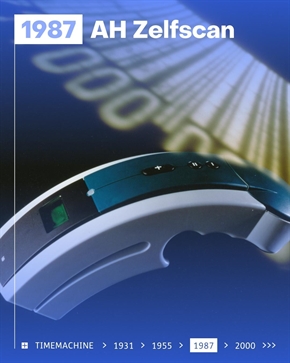
-
Alternative fuels
1990TNO has been researching hydrogen as an energy carrier for decades; its first major study appeared back in 1975. Concern about the CO2 problem led in 1990 to renewed consideration of alternative energy sources, such as wind and solar power, and the role of hydrogen in this. A new study concluded that fuel-cell and electrolysis techniques had improved significantly and that within fifty years hydrogen could play a major role as an alternative fuel.
Together with partners, TNO is now developing the technology for a new generation of electrolysers that will make hydrogen production cheaper and play an important role in our energy system. As a result, the Netherlands has become known as a “hydrogen country”, for example by pioneering the offshore production of hydrogen.
-
CASTA and Sensiplant
1993 - 2006Dutch greenhouse horticulture is renowned worldwide. A major reason for this success is the highly efficient design of its greenhouses, made possible by TNO’s CASTA programme. Foreign greenhouse constructors increasingly use this software, which came into operation in 1993. This results in lighter, stronger and larger greenhouses that make upscaling possible, improving the Dutch horticulturalists’ competitive position.
In 2006, TNO also assisted the sector by developing “Sensiplant”, a wireless system to monitor the soil moisture of pot plants in greenhouses. TNO's knowledge and expertise in this field continue to be used, not just in the Netherlands but worldwide.
-
'Contamination control' for chip manufacturers
1996What does TNO's aerospace expertise have to do with computer chips? For decades, TNO has worked on space-used instruments that need to be extremely clean. The gathered knowledge has since been used in the manufacturing of chips, whereby light is used to “write” a pattern into silicon. At ASML they had almost reached the limit of what was possible with visible light before joining with TNO to develop an innovative technique based on extreme UV light.
This required the development of an entirely new lithography machine that operates within a vacuum and with extremely clean mirrors. The tiniest nano-dust particle can disrupt the entire manufacturing process. TNO, therefore, developed ways to ensure that the mirrors were the cleanest in the world – far cleaner than instruments in an operating room. Today, worldwide, not one chip is manufactured without using an ASML machine.
-
Road pricing
1998Road pricing aims to optimise the use of the road network, thus evening out traffic distribution, reducing congestion, and lowering emissions. In principle, that sounds great, but how do you put it into practice? It was clear that in this area, TNO should carry out the first study.
In 1998, TNO suggested charging drivers during rush hour for their use of the most congested highways, those surrounding the four major cities. To accomplish this, TNO designed a small electronic device to be installed behind the windscreen. Payment would be done with a chip card. Despite extensive testing, the plan was never fully rolled out, mainly for political reasons.
Since reducing emissions is high on the political agenda today, road pricing might well enjoy a revival. If it does, we will be able to look back on that TNO experiment as the start of more sustainable road use in the Netherlands.
-
Noise cancelling (anti-noise)
1999More and more people wear noise-cancelling headphones. Generating “anti-noise” greatly reduces background noise. TNO was already testing anti-noise back in 1994. Placing magnetic sensors on aircraft propellers made it possible to determine the frequency spectrum of the engine noise.
This signal was then fed to a tone generator, that analysed the spectrum and produced the opposite sound at each frequency. The anti-sound was made audible through loudspeakers in the aircraft cabin. This allowed pilots to communicate without needing headphones. Noise cancelling technology is now also increasingly used in consumer audio devices.
-
SOCRATES: long-range sonar
2001From the start of the Cold War, the Royal Netherlands Navy and TNO collaborate to improve sonar technology for underwater detection. An early example was the “passive” Twin Array that could detect a target port or starboard of a ship. The development of “active” sonar was an important continuation, allowing it not only to receive but also to transmit.
This could detect difficult-to-observe hostile targets timely and from a great distance, thus improving the safety of military units. Since 2001, TNO has been involved with SOCRATES (SOnar CalibRAtion and TESting) and its successor SOCRATES 2
-
First mobile payment tests
2007Away with those credit cards stacked in your wallet — instead, pay with your smartphone. It might sound like a modern phenomenon, but the first study in this field was carried out in 1995 by KPN Research (since 2003 part of TNO).
TNO later conducted extensive research on Near Field Communication (NFC), the technology used to let your smartphone and the payment device communicate. And with success! This was the first step toward the payment system of the future in the Netherlands.
-
Smart Grids: smart energy sharing
2009The energy supply of the future requires “smart grids”, i.e. smart infrastructures for electricity, gas, and heat, with ICT being an essential component. Smart grids create the optimum match of supply and demand by measuring energy flows. The systems are equipped with applications to control those energy flows and the energy production (for example from solar panels).
Smart grids were first showcased in 2005, but, for decades, TNO has been researching them and developing the concepts, calculation models, and systems needed. In 2005, TNO launched its first application, anticipating the smart meter that, in 2022, can be found in almost every household.
-
AMS – Accelerated Medication Development
2009When medication is being developed, human absorption, distribution, metabolism, and excretion (ADME) studies are often only conducted in the final phase. This means that when metabolites are discovered at that stage, it’s a huge challenge for biotechnology companies to gain approval for the medication. TNO is the only organisation in Europe with a biomedical Accelerator Mass Spectrometer (AMS).
This microtracer makes it possible to detect metabolites at an early stage in the development process. This doesn’t only speed up how quickly the medication can be brought to market; it also reduces the need for testing on animals. The procedure is also less labour-intensive, resulting in cheaper medication.
-
Cybersecurity and detecting criminals
2011In 2011, the Cybercrime Intelligence Desk became part of TNO, with public authorities and companies working together to protect the country from digital threats. To help track down criminals, TNO collaborated with the police to develop QUIN software. Think of QUIN as an experienced detective who has been involved in a large number of investigations.
Based on old cases, it is possible to predict what action a criminal, who still has to serve his sentence, will take. The program indicates which options are the most likely, for example, the risk of flight, and what the police investigation should focus on. QUIN was also used in the popular TV show “Hunted”.
-
TROPOMI
2017The TROPOMI satellite monitoring instrument – designed by optical and mechanical experts at TNO, Airbus Defence and Space Netherlands, and co-developed by SRON and KNMI – is the most advanced and accurate instrument ever to be used from space to study greenhouse gases and air pollution. It, for example, enables accurate measurements of how ozone, nitrogen oxide, and methane develop in the atmosphere.
Its precision allows air pollution to be mapped down to the city level. TROPOMI can also distinguish between different sources of pollution so that targeted measures can be taken. This information is important because it gives insight into how clean the air is at a local level, and the authorities can determine whether environmental regulations are being complied with or are needed. Without TNO's knowledge, that would not have been possible.
-
Laser satellite communication
2018Almost all the connections we use in our daily lives – such as Wi-Fi, Bluetooth and 5G – are based on radio frequency waves. For a few years now, TNO has been working on something new: laser satellite communication. Light can transmit much more information, it is less expensive, consumes less power, and is more difficult for malicious parties to intercept.
Laser satellite communication can therefore answer the growing demand for data created by social media and innovations such as the self-driving car and the Internet of Things. In the future, it could also be used to improve communication during space missions to other planets.
-
MPC: learning from sensitive data without sharing it
2018Sharing information between organisations can be extremely useful, for example in scientific research, but privacy and competitive sensitivity often argue against it. That is why TNO is working on Multi-Party Computation (MPC). This is a toolkit of encryption techniques that allows multiple parties to jointly calculate data as if they share a database. Because it is one-on-one encrypted, the data can be analysed without the parties ever being able to see each other’s data.
One of the research projects is BigMedilytics. Based on sensitive data about heart failure patients, TNO’s computer model learns all sorts of correlations from the combined data of the Zilveren Kruis health insurance company and the Erasmus University Medical Centre. This makes predictions possible about who is at increased risk of heart failure, and consequently, give them the care they need.
-
High energy lasers
2019When you hear a strange buzzing in the air, it’s probably a drone hovering above you. This is useful, for instance, at a festival for emergency services, but drones can also be used with malicious intent. For example, to interfere with planes at Schiphol Airport or to carry out an attack with explosives.
TNO is therefore investigating options to shoot down unauthorised drones with high-energy lasers. These lasers operate at the speed of light and are powerful enough to pierce thick steel. With high-energy lasers, we will soon have a powerful weapon that can be used on many fronts.
Get inspired
Large dataset news organizations for Dutch AI language model GPT-NL
- Informatietype:
- News
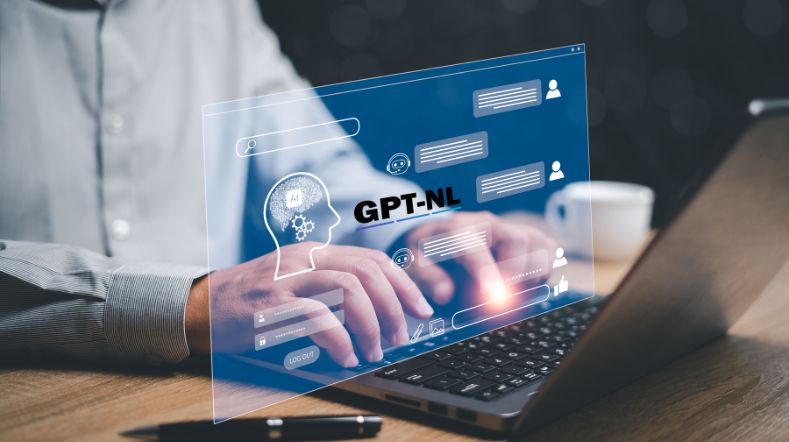

TNO estimates CO2 storage capacity beneath the North Sea
- Informatietype:
- News
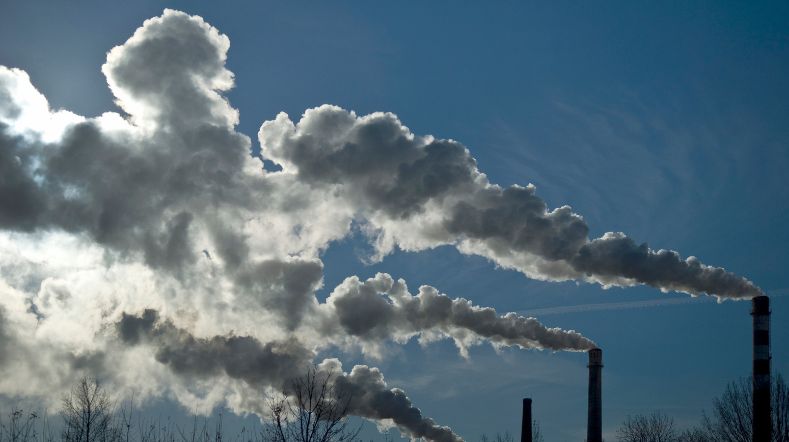

Progress in circular packaging for soups and sauces
- Informatietype:
- Insight
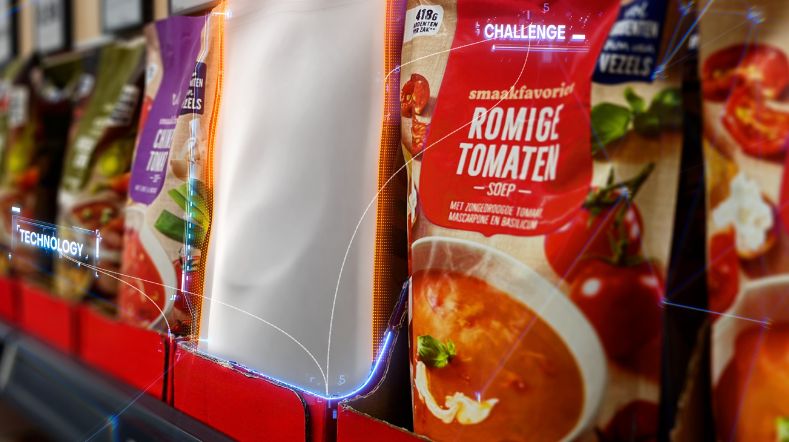

Gas production shows a slower decline than in the past decade
- Informatietype:
- News
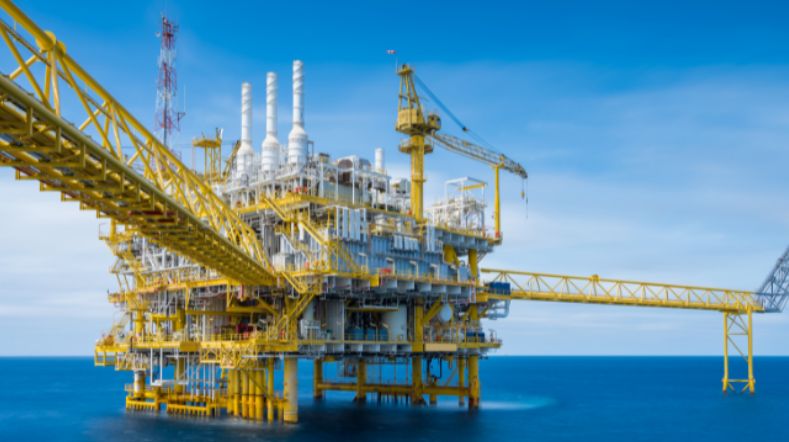

Biobased plasticizers: from compliance to competitive edge
- Informatietype:
- Insight
